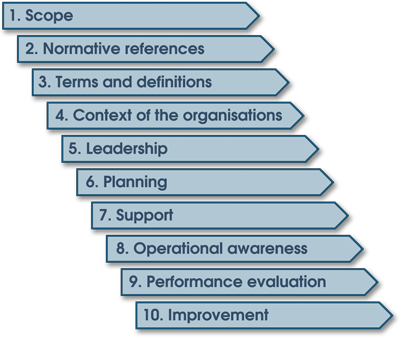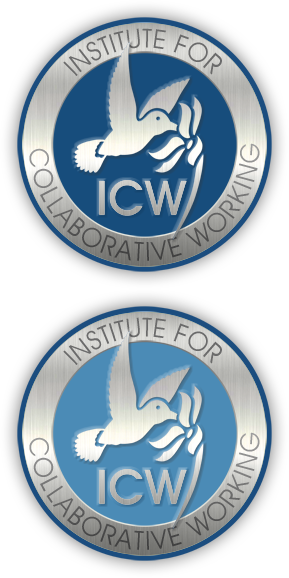 ISO 44001
ISO 44001
Collaborative Business Relationships Standard
The Standard
ISO 44001 represents a new generation of International standard with a focus on behaviours, organisational culture and management processes providing a common platform to underpin sustainable business relationships and harness the benefits of collaborative working.
Background to ISO 44001
The Journey to ISO 44001 started in 2004 where ICW by consolidating its knowledge to established a route map for collaborative working, which resulted in the launch of CRAFT a unique and integrated approach to building and sustaining more effective business relationships. This coincided with a research project 'Future Connections' highlighting the growth and demand for more complex business operating models moving towards 2020.
Against this backdrop ICW was pleased to engage with the British Standards Institution (BSI) with concept of developing a national standard, initially published as PAS 11000 (2006) which was then migrated to become BS 11000 published in 2010. In 2013 the decision was taken by the International standard organisation to build on the success of the British standard by developing it through the International community which has resulted in the publication of ISO 44001.
Benefits of working with ISO 44001
Collaborative business relationships have been shown to deliver a wide range of benefits, which enhance competitiveness and performance whilst adding value to organisations of all sizes. The publication of the ISO 44001 is a unique landmark for business.
Collaboration between organisations may take many forms from loose tactical approaches through to longer term alliances or joint ventures. ISO 44001 does not enforce a single rigid approach and recognises that every relationship has its own unique considerations whilst harnessing a range of benefits.
The ISO High Level Structure of Management Systems

 The original life cycle model as defined by CRAFT was an innovation to change the way organisations looked to develop more integrated relationships. Its core principle was that collaboration frequently failed because it was not fully considered until organisations had largely progressed to contract. Rather than appreciating that successful collaboration required a more fundamental understanding of the benefits and potential risk long before looking to engage partners by building a systemic approach to collaboration to ensure sustainable relationships with the right cultures and behaviours.
The original life cycle model as defined by CRAFT was an innovation to change the way organisations looked to develop more integrated relationships. Its core principle was that collaboration frequently failed because it was not fully considered until organisations had largely progressed to contract. Rather than appreciating that successful collaboration required a more fundamental understanding of the benefits and potential risk long before looking to engage partners by building a systemic approach to collaboration to ensure sustainable relationships with the right cultures and behaviours.
The introduction of the High Level Structure introduced by ISO was long overdue in terms of enabling organisations to better integrate their management systems and address the overlaps between multiple work streams a key factor for successful collaborations. In the development of ISO 44001 the benefits of this approach where immediately recognised allowing progressive integration of processes and systems by harnessing existing practices rather than creating independent applications
The evolution to an International standard required the blending of the Life cycle with the harmonised High level structure for ISO management standards. The HLS was structured for individual organisations based on standard clauses 4 – 10. In developing a standard for collaborative business relationships the detailed specific requirements for establishing, developing and managing third party relationships utilising the 8 stage life cycle model have been address within Clause 8 (Operations) since in a collaborative relationship effective operation relies on specific mutually agreed joint interfaces, processes, roles and responsibilities and may require specific variations to in house processes. In creating the High Level Structure the International Standards Organisation aims to harmonise management systems through a series of key management requirements; The context of the organisation (clause 4) seeks to set the overarching rationale for the adoption of a collaborative business relationship approach.
Leadership (clause 5) outlines the key requirements for the executive level and leadership to identify the objectives for collaboration, develop and implement policies and processes, allocation of resources, ensure effective communication, assign a Senior Executive Responsible (SER) for overseeing the collaborative working and establishing a robust internal governance structure to ensure effective operations.
Planning (clause 6) focuses on ensuring that effective risk and opportunity management is in place aligned to the its operational objectives and identify where these may be supported or enhanced through the adoption of collaborative working approaches, or where additional external partners may be required in order to achieve targeted outcomes.
Support (clause 7) establishes the platform to ensure the appropriate allocation of resources with the right competence and behaviours together with reinforcing the awareness of personnel of the policies.
Operations- Life–cycle (clause 8)
Operational Awareness
For many larger organisations the cascading of management systems will be influenced by the impact of divisional and industry sectors.
|
WORKING TOGETHEREstablishing Joint governance for collaborative programmes and integrating this with effective contracting arrangements requires careful attention taking into consideration the joint objectives and those of the individual partners, and ensuring the incentives and measurement will support collaborative behaviours. | VALUE CREATIONThe key to maintaining a strong relationship is to ensure that it remains current and drives innovation to bring additional value to the partners through joint continual improvement programmes. | STAYING TOGETHERJoint management is crucial if relationships are to mature and support people and the business environment. Effective performance and behaviours should be monitored along with issues and disputes which will be inevitable but can strengthen relationships if handled effectively. |
EXIT STRATEGY ACTIVATIONMaintaining a joint exit strategy is important to keep the partners focused. At the same time having clear rules for disengagement will frequently improve engagement throughout the life of the relationship and into the future. |
Performance and Auditing (clauses 9-10)
As with any management systems approach it must be effectively maintained and reviewed to ensure its continued appropriateness. Whilst collaborative application may involve multiple parties the corporate processes and systems need to be maintained as well as harnessing experiences.

